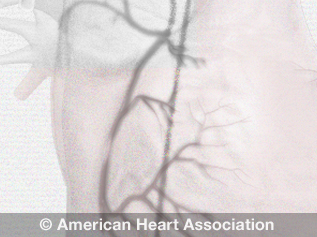Coronary Angiogram
Quick Facts
- A coronary angiogram shows if coronary arteries are narrowed or blocked.
- It helps your health care team decide on steps for treatment.
What is a coronary angiogram?
A coronary angiogram is a special X-ray test. It shows whether your coronary arteries are narrowed or blocked.
The coronary arteries supply your heart muscle with blood. They can become clogged from a buildup of plaque, which consists of cholesterol, cells and other substances. This can reduce the blood flow to your heart. If the plaque breaks, a blood clot forms. The clot further blocks the blood flow through the narrowed artery. If blood flow is completely blocked to part of the heart muscle, it can result in a heart attack.
See an animation of a coronary angiogram.
Why do people have a coronary angiogram?
An angiogram can help show where and how much your arteries are blocked. This helps your doctor choose the treatment you need.
What happens during an angiogram?
The test is done in a hospital heart catheterization lab. You will stay awake for the test.
You lie on a table near a camera and other equipment. Spots on your groin or arm will be numbed and a thin tube (catheter) will be inserted into an artery and up to your heart.
A special fluid goes through the catheter. This fluid makes your arteries show up on the X-ray. As the fluid goes through your arteries, X-rays are taken. Your health care professional will study the X-ray images for any problems with your coronary arteries.
What might I feel?
- Slight pressure as the catheter is put in
- Heart rate may increase
- A sense of warmth all over the body from the fluid
Some people might have nausea or feel some chest discomfort as the fluid goes in. These symptoms are rare and may only happen for a short time. Sometimes, the fluid can cause an allergic reaction or kidney damage.
What happens after the test?
Your health care team will talk to you about the test results. If your results show that you have severe narrowing or blockages, treatment options include:
- An angioplasty or stent to open your arteries by pushing the plaque flat against the artery wall. This improves blood flow.
- Coronary artery bypass graft (CABG) surgery uses a healthy artery from another part of your body to reroute blood flow around the blockage.
If you have coronary artery narrowing that doesn’t limit blood flow, you may not need a procedure. Instead, medications and lifestyle changes may be prescribed to help manage your blood pressure and lower your cholesterol. This can help stop further plaque buildup.
Lifestyle changes that can help reduce your cholesterol include:
- Stopping smoking and avoiding secondhand smoke
- Following a heart-healthy eating plan
- Being physically active
View or print an Answers by Heart sheet: What Is a Coronary Angiogram? (PDF)






